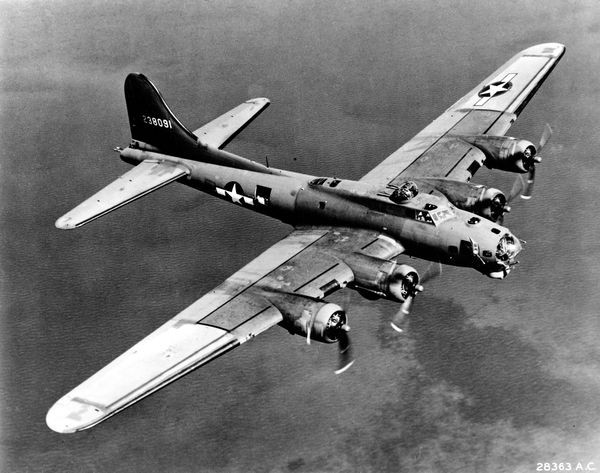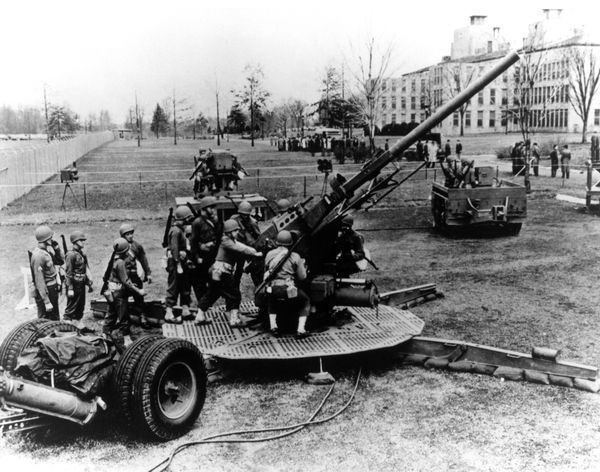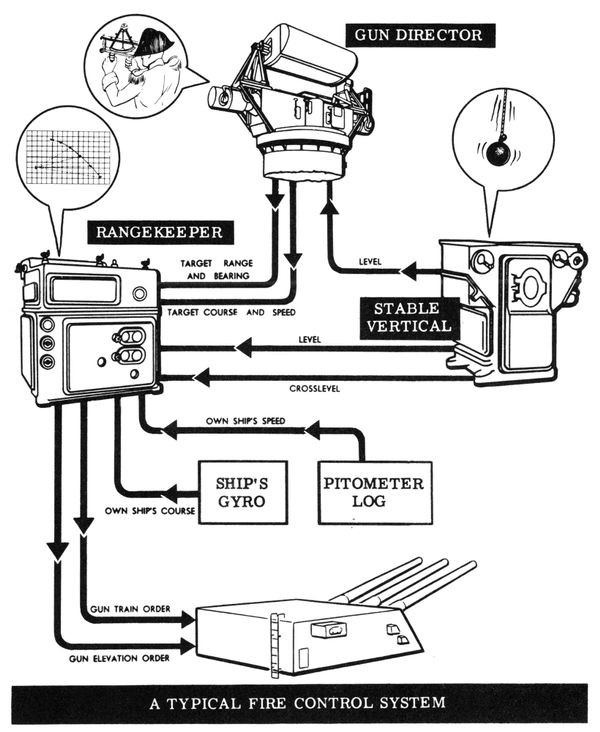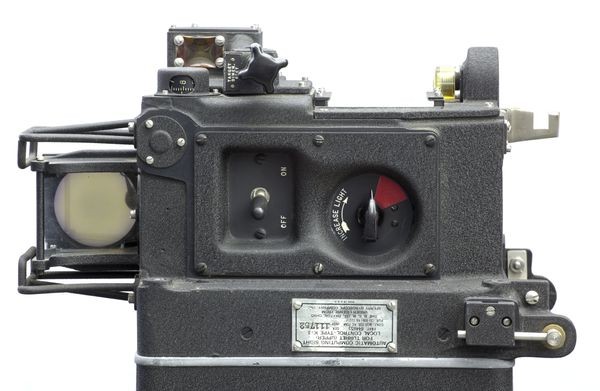Ready. Aim. Fire.
B-17 Flying Fortress bomber
World War II bombers often relied on gunners inside turrets for defense against fighter planes. This extremely dangerous assignment was immortalized in Randall Jarrell’s 1945 poem, “The Death of the Ball Turret Gunner.”
Ready. Aim. Fire.
That command seems simple. Yet the “aim” part can be challenging. Calculating the trajectory of high-speed projectiles, and hitting moving targets, demands complex real-time calculations.
Ballistics control was a perfect challenge for real-time computing. Solutions began with mechanical analog systems, shifting later to electronic digital systems, and then to digital integrated circuits, both for military applications and for space exploration.
M9 Gun Director demonstration at Bell Labs
Designed by Bell Labs engineer David Parkinson, who conceived it in a dream, the M9 director aimed antiaircraft guns. It was especially successful in shooting down German V-1s, an early form of cruise missile.
View Artifact DetailU.S. Navy fire control fundamentals training drawing
Teaching young sailors the complexities of weapons systems was difficult. Illustrated training manuals helped explain how the system worked while also putting it into historical context.
View Artifact DetailHitting a Moving Target
Targeting fast-moving, high-altitude aircraft from the ground requires rapid calculations of speed and distance. So does the opposite task: hitting surface targets from a speeding plane.
During World War II, analog computers aided both missions. Electronic gun directors on the ground, and bombsights and airborne computing guns aloft, brought unprecedented accuracy.
K-3 automatic computing gun sight for upper turret
The K-3 airborne computing gun sight was installed aboard planes such as the B-17. It aimed the machine gun based on its own motion and the range to the target.
View Artifact Detail


